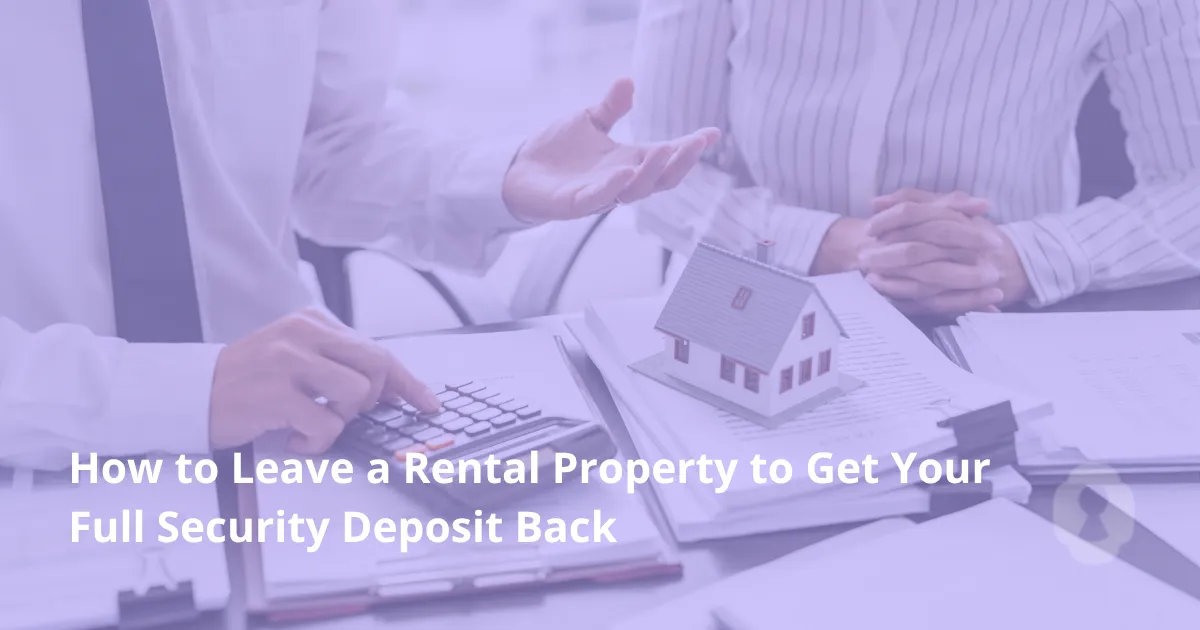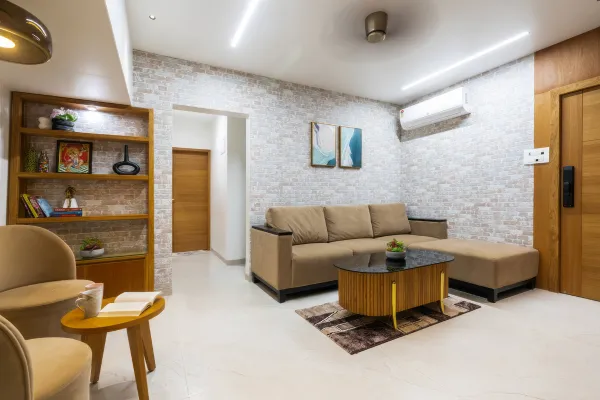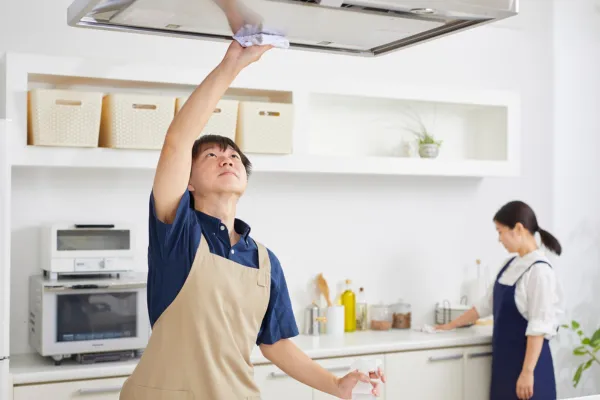
Are you wondering if you can get your money back when you move out of your rental?
Knowing your rights and duties as a tenant is key to getting your funds returned.

California Civil Code Section 1950.5 says a landlord must return your tenant's deposit within 21 days after you leave. To do this, you need to leave the rental unit clean and in good shape. Make sure there's no damage that's not normal wear and tear.
Knowing the laws about rental deposits can help you avoid fights with your landlord. By following a few easy steps, you can make sure you get it back without any trouble.
"The security deposit process isn't just a financial transaction—it's a reflection of the entire rental relationship. When landlords approach deposits as a collaborative protection rather than a potential penalty, it fundamentally changes the tenant experience. The most progressive rental operations today are moving beyond the traditional adversarial model by implementing transparent documentation systems, conducting interactive walk-throughs, and providing clear, itemized explanations that educate rather than intimidate. This shift isn't just about compliance with state laws—it's about recognizing that how we handle a tenant's money directly impacts how they'll care for our property.”
Taylor Wilson, CEO of Rent with Clara
Security deposit laws differ a lot in the United States. It's key for tenants to know their rights. These laws tell landlords how to handle security deposits, like when to return them and when they can take deductions.
Every state has its own rules about rental deposits, and state law determines how much a landlord can collect upfront. For example, California requires landlords to return the security deposit within 21 days, while other states may have different timeframes.
Some states limit deposits to one or two month's rent, depending on whether the property is furnished or unfurnished. It's important for tenants to read your lease to see what specific requirements apply to your situation and familiarize yourself with the process for disputing deductions.
Landlords must provide an itemized list of any deductions taken from your deposit, along with receipts for repairs or cleaning costs. They're required to return your security deposit minus legitimate charges within 30 days (or the timeframe specified by your state).
If your landlord has not returned your funds or provided proper documentation within the legal timeframe, you may have grounds to file a claim in small claims court. Many landlords understand these obligations, but it's your responsibility to know your rights.
As a renter, you're entitled to receive your full deposit back if you've maintained the property properly. You have the right to be present during a move-out walk-through to discuss any potential issues.
If your landlord claims damage that you didn't cause, you can dispute it with documentation. Before the end of your lease, make sure to give the landlord your forwarding address to ensure you receive your refund promptly.
Understanding these rights helps you protect your interests throughout your tenancy.
The key to a successful move-out is in the details. From reviewing your lease agreement to scheduling a final inspection, it's all about the details. Staying organized and focused on getting your full security deposit back is crucial.
Your rental agreement outlines specific move-out requirements that you'll need to follow. Start by checking how much notice you need to terminate your lease and whether there are special cleaning standards.
Look for clauses about what your landlord can charge for and what constitutes normal wear versus damage. This is also the time to notify your landlord in writing about your intent to move, as required by most leases.Two Weeks Before: Scheduling Final Inspection
Request a pre-move-out inspection with your landlord to identify any issues that might affect your deposit return. Being present during this walk-through lets you address concerns immediately and understand what needs attention.
Some issues—like small holes in the wall from picture hangers—might be acceptable unless your landlord specifically requires patching. Take detailed notes during the inspection so you know exactly what's necessary to return the unit in acceptable condition.
A comprehensive move-out checklist is your roadmap to a successful move-out. It ensures you don't overlook critical tasks that could affect your security deposit.
Here's a basic outline to get you started:
Following this timeline helps ensure you don't miss critical tasks that could affect whether your landlord can keep your security funds. When you're ready to move, having everything documented and completed gives you the best chance of receiving your full refund.

To get your security deposit back, you need to know the cleaning requirements for landlords. Make sure to leave the rental property as it was when you moved in, except for normal wear and tear. This is key to getting your deposit back.
The kitchen typically receives the most scrutiny during move-out inspections. Clean the oven, stove, and refrigerator thoroughly, removing all food residue and grease buildup. Wipe down countertops, sanitize all surfaces, and clean inside cabinets and drawers.
A thorough kitchen cleaning is often necessary to return the unit to the condition of the apartment when you moved in, which helps you avoid deductions.
Cleaning experts say, "A deep clean of the kitchen is not just about looks. It's about removing bacteria and germs." Check out this move-out cleaning checklist for more detailed guidance.
Bathrooms require careful attention to remove soap scum, mildew, and hard water stains from all fixtures. Clean and disinfect the shower, bathtub, sink, and toilet, paying special attention to high-touch areas.
The condition of your apartment's bathrooms can significantly impact whether your landlord may retain any portion of your deposit, so don't skip these areas.
Vacuum or mop all floors, dust thoroughly, and remove any stains from carpets and upholstery. These spaces should be clean and free of personal belongings by the time you move out.
Address any damage beyond normal wear—your landlord is entitled to deduct for actual damage, but not for typical aging of the property.
"Cleaning is not just about aesthetics; it's about creating a healthy environment." This is very true for living areas and bedrooms where you spend a lot of time.
Walls should be without holes and marks, and any needed repairs should be done. Floors, whether hardwood, tile, or carpet, need to be cleaned according to their type. Fixtures like light switches and door handles should be cleaned and polished.
Patch any holes in the wall from hanging items, touch up paint if required by your lease, and ensure floors are properly cleaned. By meeting these standards, you maximize your chances of receiving the full amount of the security deposit back within 30 days of moving out.

Protecting your interests as a tenant starts with documenting your rental unit's condition. This step is key to avoid disputes when you move out. It also helps ensure you get your security deposit back.
Document the condition of your apartment when you first move in and again at the end of the lease. Take photos of any pre-existing damage to prove these issues weren't caused during your lease term.
When you compare these records to your move-out documentation, you'll have clear evidence that any wear and tear was already present. This comparison is crucial if your landlord refuses to return your full deposit.
Tip: Use the same method for documenting both move-in and move-out conditions. This makes comparisons easier.
Create a comprehensive visual record with clear, well-lit photos and videos of every room, fixture, and surface. Date and timestamp everything so there's no question about when the documentation was created.
This evidence becomes invaluable if you need to prove the apartment when you move out was in the same condition as when you moved in. Focus on areas your former landlord might scrutinize, like appliances, walls, and flooring.
Remember, the goal is to show the condition of the property, so be thorough.
Before the end of the lease, give the landlord the address where you want your deposit sent in writing. Most states require you to provide a new address to receive your funds, and if your landlord does not return your deposit to the correct address, it could delay the process.
Send this information via certified mail or email to create a paper trail showing you provided your new address in writing.
For more information on security deposit rules, you can visit this resource. It helps you understand the regulations that may apply to your situation.
Resolving security deposit disputes needs clear understanding and good communication. Tenants expect their deposit back when they move out. But landlords might deduct damages. Knowing the difference between wear and tear and actual damage is key.
Normal wear includes minor scuffs, faded paint, or carpet wear from regular use over your lease term. However, your landlord can charge for actual damage like large stains, broken fixtures, or unauthorized modifications.
If you're charged for damages that were documented at move-in, your evidence can help you dispute these charges. Understanding what your landlord can't legally deduct protects you from unfair charges.
If you disagree with deductions, send a polite letter to your landlord explaining your concerns and providing supporting documentation. Reference specific state law provisions that support your position.
If your landlord claims damages you didn't cause, your move-in photos and videos become critical evidence. Most disputes can be resolved through clear communication before escalating to legal action.
If your landlord does not return your deposit or provide a proper itemized list within the required timeframe, you may need to file a claim in small claims court. Before taking legal action, send a formal demand letter to your landlord requesting the full return of security funds.
Gather all documentation including your lease, move-in/move-out photos, and any written communication. Many states award additional damages if a landlord refuses to return deposits without valid reasons.
For more help on handling security deposit disputes, check out Outerbridge Law's blog. It offers useful advice and tips.
Getting your refund requires careful attention throughout your tenancy. By documenting everything, following proper procedures, and understanding your rights under state law, you'll be well-prepared when it's time to move out of your rental. Remember to ask your landlord questions if anything is unclear about the process.
The key is being proactive—from the start of your lease term through the final days of moving out. Landlords can only keep your security deposit to cover any unpaid rent or actual damage beyond normal wear. By following these guidelines, you protect your interests and ensure the return of security deposits happens smoothly and on time.